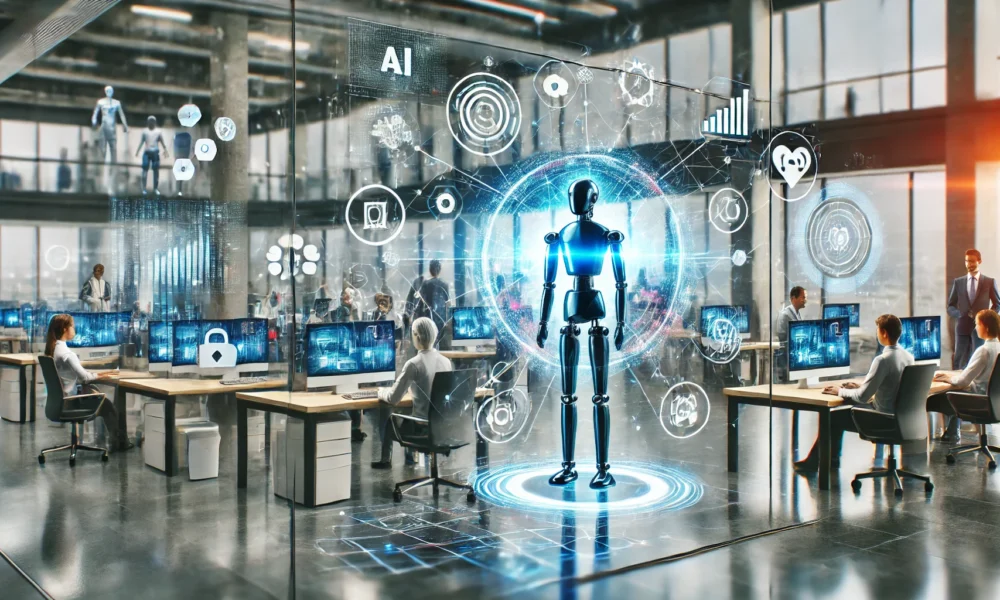Fighting Fraud and Cyber Threats: The Rise of AI Security Agents
Businesses are losing an estimated 5% of their annual revenue to fraud, highlighting the escalating threat of cybersecurity breaches. The digital transformation has created vulnerabilities that cybercriminals exploit with increasing sophistication, necessitating a shift towards AI-powered security solutions.
The Evolution of Fraud Detection: AI’s Role in Enhancing Security
AI has revolutionized fraud detection by analyzing vast amounts of data in real-time, identifying complex patterns, and adapting to new threats autonomously. Unlike traditional security systems, AI agents can make decisions quickly and accurately without human intervention, making financial transactions and corporate networks significantly safer.
Unleashing the Power of AI in Cybersecurity: Real-Time Detection and Prevention
AI agents pull data from multiple sources to detect fraud as it happens, utilizing supervised and unsupervised learning to identify known patterns and unusual behaviors. By continuously refining their models and staying ahead of fraudsters, AI agents are reshaping the landscape of cybersecurity.
Real-World Applications: How Leading Companies are Leveraging AI for Security
American Express, JPMorgan Chase, PayPal, and Google are among the companies using AI-powered security algorithms to enhance fraud detection and protect users from cyber threats. These advanced technologies are significantly enhancing the efficiency and accuracy of security measures.
Challenges, Limitations, and Future Directions in Security and Fraud Detection
While AI agents offer significant advancements, challenges such as data privacy, false positives, integration issues, and regulatory compliance need to be addressed. Emerging technologies like quantum computing and federated learning are expected to enhance the capabilities of AI agents in the future.
The Bottom Line: Embracing AI-Driven Security Solutions for a Safer Digital Future
AI security agents are revolutionizing how businesses defend against fraud and cyber threats, offering a level of security unmatched by traditional methods. By investing in cutting-edge AI technologies, businesses can stay ahead of cybercriminals and build a safer digital world for their customers.
-
How can AI agents help improve security in the business world?
AI agents can help improve security in the business world by using advanced machine learning algorithms to detect and respond to threats in real-time. These agents can analyze large amounts of data to identify patterns and anomalies that may indicate a security breach, allowing businesses to take proactive measures to protect their data and systems. -
What role do AI agents play in fraud detection for businesses?
AI agents play a crucial role in fraud detection for businesses by identifying suspicious activities and transactions that may indicate fraudulent behavior. These agents can analyze data from multiple sources to pinpoint potential fraud risks and alert businesses to take appropriate action, helping to minimize financial losses and protect their reputation. -
How do AI agents support compliance efforts in the business world?
AI agents support compliance efforts in the business world by constantly monitoring and analyzing data to ensure that companies are adhering to regulations and standards. These agents can identify areas of non-compliance and provide recommendations for corrective actions, helping businesses to avoid costly fines and penalties. -
What are the benefits of using AI agents for security and fraud detection?
Some benefits of using AI agents for security and fraud detection include enhanced accuracy and efficiency, as these agents are able to process large amounts of data quickly and accurately. They can also help businesses to detect threats and fraudulent activities in real-time, allowing them to respond swiftly and effectively to mitigate risks. - How can businesses integrate AI agents into their existing security and fraud detection systems?
Businesses can integrate AI agents into their existing security and fraud detection systems by working with experienced AI and technology providers. These providers can help businesses to customize AI solutions to meet their specific needs and seamlessly integrate them into their current processes. Training employees to work alongside AI agents can also help maximize the benefits of using these advanced technologies for security and fraud detection.



